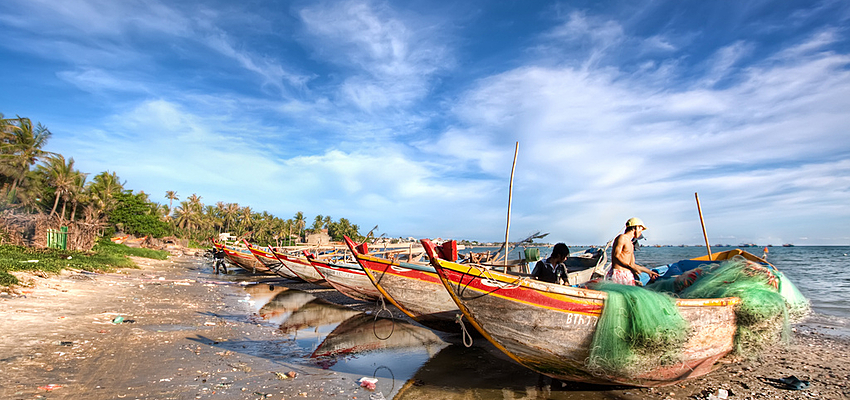


Vietnam was invaded early on and the inhabitants' nationalism and their willingness to fight became clear.
The first inhabitants of Vietnam appeared in around 200 BC. The country was invaded by the Chinese in 111 AD, during the Han Dynasty. The Han Chinese attempted to impose their customs and morals, but the Vietnamese rose up on several occasions. An independent state was formed in 938. Ngo Quen, who secured the country's independence from China, founded a great dynasty that left the country divided into feudal fiefdoms. They would be led in turn by the Ly, Tran, Ho, Lê, Tay Son and Nguyen Dynasties. Buddhism grew in popularity, particularly under the Ly and Tran Dynasties, from 1012 to 1400.
In 1858, the French landed at Da Nang, a port in central Vietnam. In 1867, Cochinchina, in the south of the country, became a French colony. Annam, in central Vietnam, and Tonkin in the north subsequently became French protectorates. "French Indochina" was created, encompassing Cambodia and Laos. The Vietnamese began to fight relentlessly in order to obtain their independence once again. Independence was declared by Ho Chi Minh in Hanoi in 1945. One year later, the French attempted to reimpose their authority, beginning the First Indochina War.

In 1954, Dien Bien Phu fell, and 16,000 soldiers were taken prisoner. The independence of Vietnam, its sovereignty and its territorial integrity, were acknowledged. Nonetheless, the Geneva Conference very soon ordered the division of the country into two equal portions, following the famous demarcation line that ran along the 18th parallel. In 1963, a widespread popular revolution, led by the army, overthrew the dictatorial regime of Ngô Dinh Diêm. Following the 1975 Spring Offensive, the government in Saigon (which you should visit during your stay) collapsed, despite the support of the United States. Vietnam has therefore reunified once again, and since then it has been known as the Socialist Republic of Vietnam. Its capital is Hanoi (another place to visit during your trip to Vietnam). Saigon was renamed "Ho Chi Minh City" in tribute to the leader of the revolution. The country became a member of ASEAN, the Association of South East Asian Nations, in 1995, and joined the WTO in 2006.